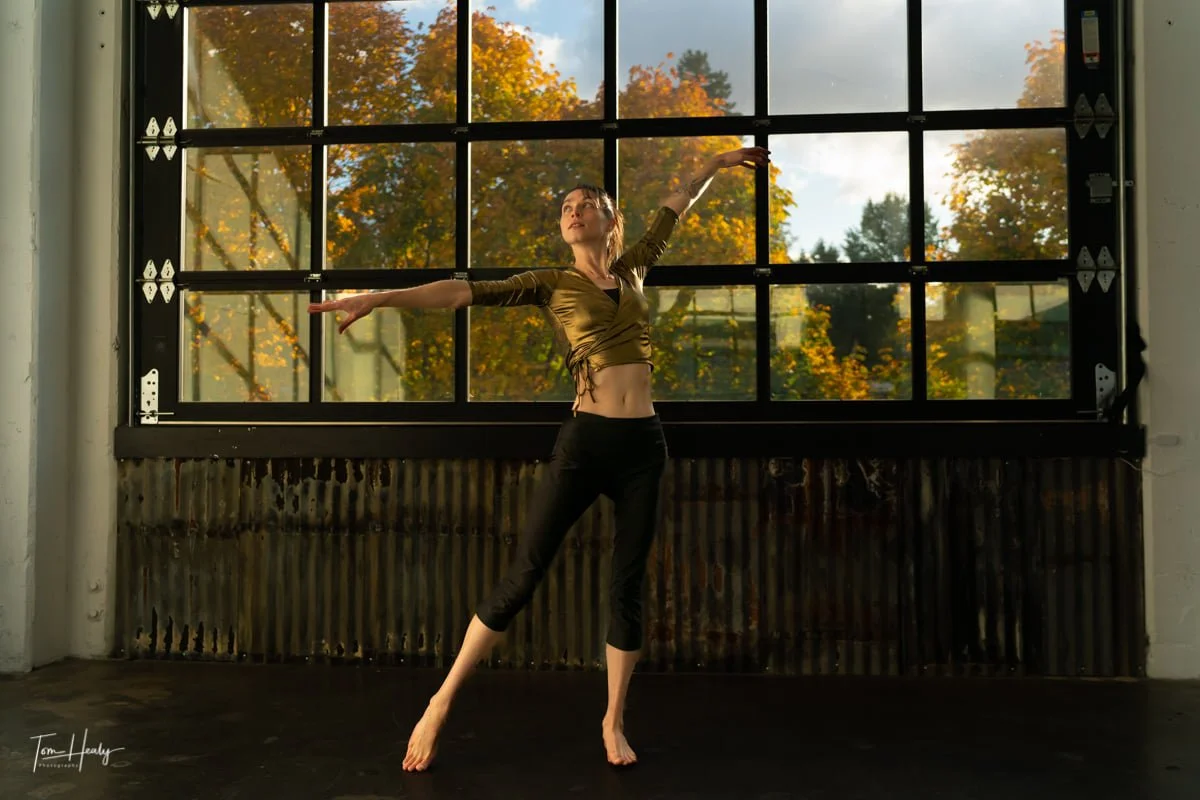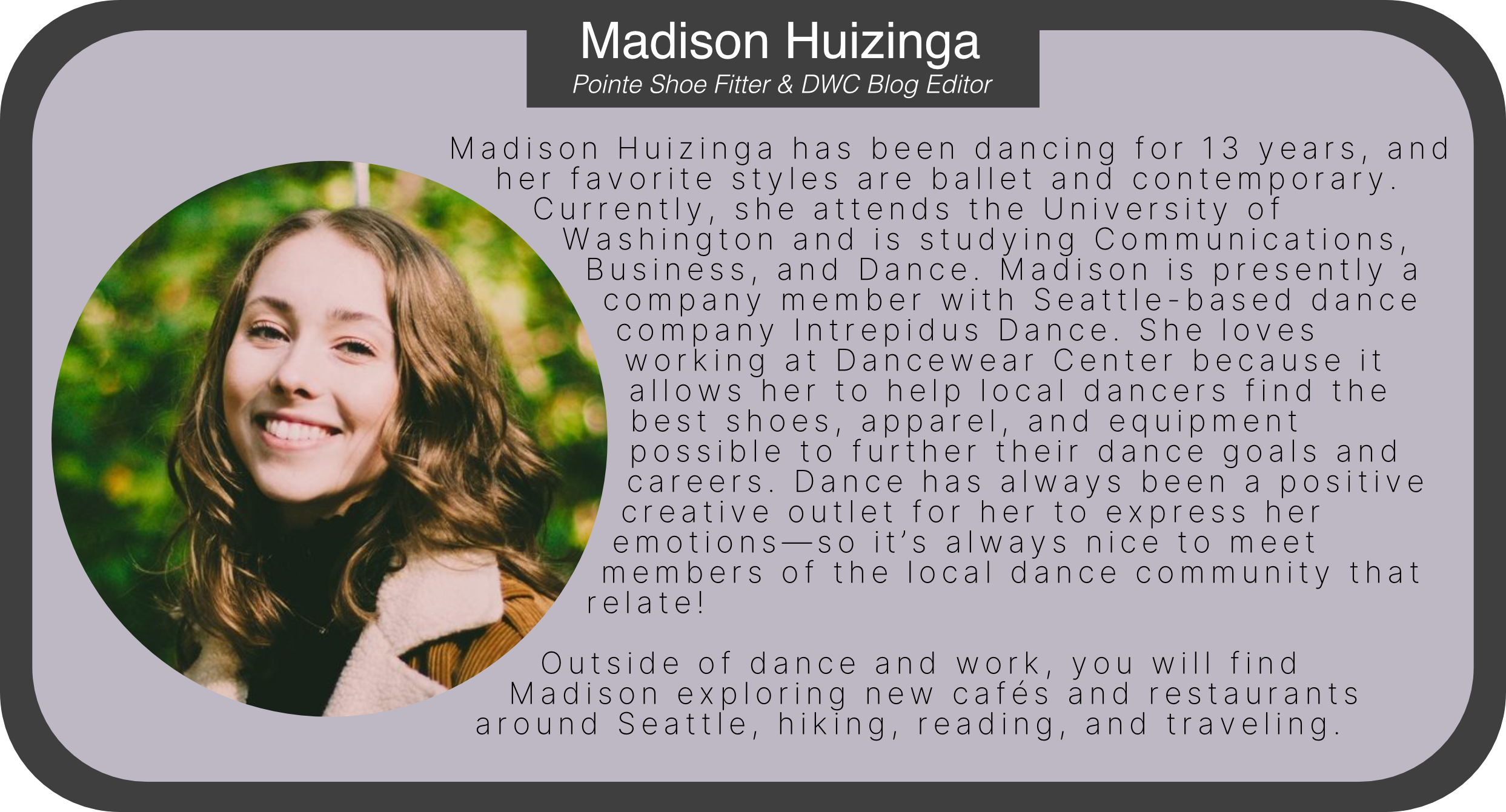A Local Dancer on Utilizing a Home Studio Space
Erin Nichole Boyt on Blending Dance & Home
By Madison Huizinga, DWC Blog Editor
Photo by Mary Turcott
During the COVID-19 lockdown of 2020, many dancers lost the space and opportunity to do what they loved. Confined in their homes, dancers no longer had the capacity to move their bodies in the way they once could. It’s safe to say that for most of us, it felt like a return to “normal” would never come. This was one of the fears of dancer Erin Nichole Boyt, as she had just started getting acclimated to the Portland dance scene after relocating from Seattle. Now with the help of her new home studio space, Erin has been excited about reconnecting with dance in a more seamless way. Donate to Erin’s fundraising campaign for her live/work studio, known as Pottershop Studio, so it can be well-supplied and ready for dancers.
Erin began dancing around five years old at the only dance studio in her small town. She fell in love with movement early on in her life, explaining that she is a “kinesthetic learner” and takes in information best when it involves movement and tactile experiences. Erin explains that she deeply resonated with modern, tap, and African styles of dance, forms of movement that felt rhythmic and grounded. While she studied dance in college, Erin explains that she struggled within her school’s dance department, as it valued students with a strong ballet background which is something Erin lacked. She pivoted her focus to theatre, cultivating her love for dance in another arena.
After graduating college, Erin moved to Seattle and started her dance company “with no previous experience choreographing.” She explains that her practice started small, and eventually lead to her choreographing more and producing bigger shows, working with the Seattle International Dance Festival for nearly a decade. “I built my company around the idea of collaboration,” Erin explains. She moved to Portland, Oregon in 2018 and had just started rehearsing her first show in the city when the pandemic hit.
“I nosedived emotionally and mentally into this pretty deep depression,” Erin says of her mental health amid the COVID-19 pandemic. “There were days where I truly believed that I would never dance again and this [was] just my life now.” These emotions of sadness, grief, and longing are ones many dancers can relate to in the past couple of years.
Photo by Tom Healy
Nonetheless, as Erin mentions, dance has a way of sticking with people in ways they may not expect. “There’s something in a creative drive that just doesn’t ever really die,” she emphasizes.
Erin had dreamed about having a live-work space in the future, but wasn’t looking for one when she stumbled upon her current dwelling. Prior to moving into the live-work studio space, Erin had been renting a studio once a week, but the thought of having studio space available to her all hours of the day was simply too good to be true. In addition to choreographing and teaching out of the space, she’s planning on working with clients on strength training, injury prevention, and exercises to aid with different forms of movement dysfunction.
Erin has enjoyed being able to decorate and furnish her studio space in a way that inspires her creatively. Down the line, getting back into choreographing and producing shows is a goal of hers and her new space will enable her to do that with greater ease.
Erin says that one of the things she loves most about dance is the fact that she never gets bored of it, there is seemingly always something new to learn through movement. She is fascinated by the ways sensory inputs from the environment influence the way people move and the shared understanding of movement that all humans possess. “It’s something that just connects all of us universally,” she says. Now that dance is more integrated into her life by way of her live-work studio space, Erin is able to feel even more deeply connected to this practice that means so much to her.
Photo by Brett Love
A change that Erin hopes to see occur in the dance industry is a greater interrogation of the so-called “ideal” body a dancer should have. She shares that many dance genres value a specific, restrictive aesthetic that can be harmful for dancers. Being told that there is a certain way to look can create a disconnection between dancers and their bodies. Dancers’ bodies should be used to help realize their artistic visions, not be scrutinized. Rather than focusing on how dancers’ bodies should look, Erin hopes for dance to be viewed more as an expression and mode to communicate with one another. “I think we just really need to broaden our view of what dance is,” Erin shares.
“If you have a body you’re a dancer!” Erin declares. Click here to donate to Pottershop Studio!



